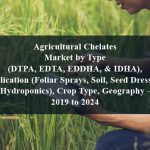OVERVIEW
The global market size of phytogenic feed additives is expected to reach USD 1,230 million by 2025, recording a CAGR of 9.75% over the forecast period. The market is driven primarily by rising demand for naturally produced feed additives as alternatives to in-feed antibiotics; and growing animal health concerns.








TABLE OF CONTENT
1 Global Phytogenic Feed Additives Market
1.1 Study Objectives
1.2 Market Definition
1.3 Study Scope
1.3.1 Markets Covered
1.3.2 Geographic Scope
2 RESEARCH METHODOLOGY
2.1 Research Data
2.1.1 Secondary Data
2.1.1.1 Key Data From Secondary Sources
2.1.2 Primary Data
2.1.2.1 Key Data From Primary Sources
2.1.2.2 Key Industry Insights
2.1.2.3 Breakdown of Primaries
2.2 Market Size Estimation
2.2.1 Bottom-Up Approach
2.2.2 Top-Down Approach
2.3 Market Breakdown and Data Triangulation
2.4 Research Assumptions
3 Global Phytogenic Feed Additives Market – Executive Summary
3.1 Market Revenue, Market Size and Key Trends by Company
3.2 Key Trends by type of Application
3.3 Key Trends segmented by Geography
4 Global Phytogenic Feed Additives Market – Comparative Analysis
4.1 Product Benchmarking – Top 10 companies
4.2 Top 5 Financials Analysis
4.3 Market Value split by Top 10 companies
4.4 Patent Analysis – Top 10 companies
4.5 Pricing Analysis
5 Global Phytogenic Feed Additives Market – Industry Market Entry Scenario
5.1 Regulatory Framework Overview
5.2 New Business and Ease of Doing business index
5.3 Case studies of successful ventures
5.4 Customer Analysis – Top 10 companies
6 Global Phytogenic Feed Additives Market – Market Forces
6.1 Introduction
6.2 Market Dynamics
6.2.1 Drivers
6.2.2 Opportunities
6.2.3 Challenges
6.3 Porters Analysis of Market
6.3.1 Bargaining power of suppliers
6.3.2 Bargaining powers of customers
6.3.3 Threat of new entrants
6.3.4 Rivalry among existing players
6.3.5 Threat of substitutes
7 Global Phytogenic Feed Additives Market – Strategic Analysis
7.1 Value Chain analysis
7.2 Product Life Cycle
7.3 Supplier and distributor analysis (Market share and product dealing strategies)
8 Global Phytogenic Feed Additives Market – By Type (Market Size – & million/billion)
8.1 Essential oils
8.2 Flavonoids
8.3 Saponins
8.4 Oleoresins
8.5 Others
9 Global Phytogenic Feed Additives Market – By Livestock
9.1 Poultry
9.2 Swine
9.3 Ruminants
9.4 Aquatic animals
9.5 Others
10 Global Phytogenic Feed Additives Market – By Function
10.1 Performance enhancers
10.2 Antimicrobial properties
10.3 Palatability enhancers
10.4 Others
11 Global Phytogenic Feed Additives Market – By Form
11.1 Dry
11.2 Liquid
12 Global Phytogenic Feed Additives Market – By Source
12.1 Herbs & spices
12.2 Flowers
12.3 Fruits & vegetables
13 Global Phytogenic Feed Additives Market – By Geography (Market Size – & million/billion)
13.1 Introduction
13.2 North America
13.2.1 US
13.2.2 Canada
13.2.3 Mexico
13.3 Europe
13.3.1 U.K
13.3.2 Germany
13.3.3 Italy
13.3.4 France
13.3.5 Spain
13.3.6 Rest of Europe
13.4 Asia-Pacific
13.4.1 China
13.4.2 Japan
13.4.3 India
13.4.4 South Korea
13.4.5 Rest of APAC
13.5 Rest of the World
13.5.1 South America
13.5.2 Middle East
13.5.3 Africa
14 Global Phytogenic Feed Additives Market – Entropy
14.1 New product launches
14.2 M&A’s, collaborations, JVs and partnerships
15 Global Phytogenic Feed Additives Market Company Profile (Key Players)
15.1 Market Share, Company Revenue, Products, M&A, Developments
15.2 Delacon Biotechnik GmbH
15.3 BIOMIN Holding GmbH
15.4 Bluestar Adisseo Co., Ltd.
15.5 Pancosma
15.6 Phytosynthese
15.7 Synthite Industries Ltd.
15.8 DowDuPont
15.9 Phytobiotics Futterzusatzstoffe GmbH
15.10 Kemin Industries, Inc.
15.11 Dostofarm GmbH
15.12 Company 11 & more
16 Global Phytogenic Feed Additives Market – Appendix
16.1 Sources
16.2 Abbreviations













